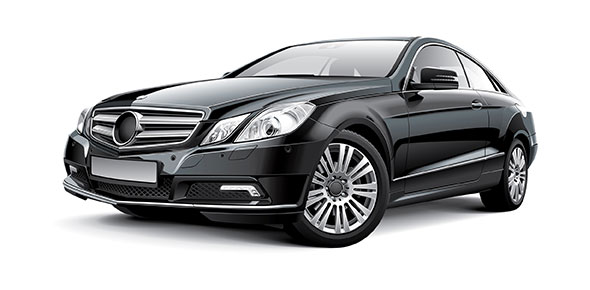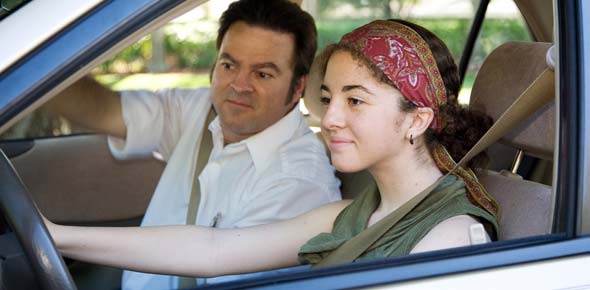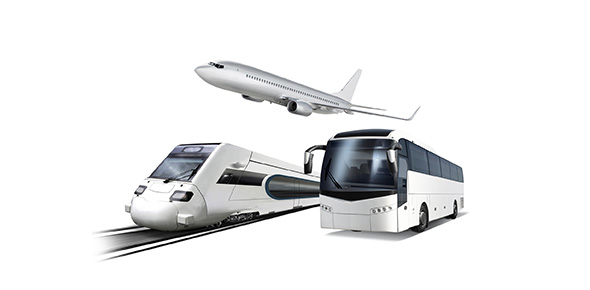Related Flashcards
Related Topics
Cards In This Set
| Front | Back |
|
Water on the road can cause a vehicle to hydroplane (slippery). Your car can hydroplane at speeds as low as :
a) 45 MPH b) 35 MPH c) 40 MPH |
35 miles per hour
|
|
What is the proper way to enter an expressway from the entrance ramp?
A) Go down the ramp and cross over to the traffic lane as soon as possible
B) Use the acceleration to blend into the traffic
C) Go down to the bottom of the ramp and stop until it is safe to enter the expressway
|
Use the acceleration to blend into the traffic
|
|
If while driving, a tire suddenly blows out, you should:
A) Grip the steering wheel firmly, slow down, and exit form the traffic lanes
B) Pump the brakes rapidly
C) Brake hard and steer toward the right edge of the highway.
|
Grip the steering wheel firmly, slow down, and exit form the traffic lanes.
|
|
The maximum speed limit on a (rural) Interstate Hwy is:
a) 60 mph
b) 70 mph
c) 55 mph
|
70 mph
|
|
You are driving behind a motorcycle and want to pass. You must:
a) Stay in the right lane as much as possible, because the motorcyclist is small and doesn't use all of the lane.
b) Blow your horn to make the motorcycle move onto the shoulder so you can pass.
c) Have your vehicle entirely into the left lane before and during the pass
|
Have your vehicle entirely into the left lane before and during the pass
|
|
If you are involved in an accident, one of the immediate requirements is to:
a) Render aid to the injured
b) Notify your insurance agent
c) Notify the Secretary of State's Office
|
Render aid (help) to the injured (hurt)
|
|
The GA Implied Consent Law means that:
a) You must sign a statement that you will not drive a motor vehicle after drinking more that 3 drinks
b) You agree to be tested for the amount of alcohol in your blood, if arrested for drunk or impaired driving
c) You consent to have a blood sample taken if an officer stops you for reckless driving.
|
You agree to be tested for the amount of alcohol in your blood, if arrested for drunk or impaired driving
|
|
Streets and highways are more slippery:
a) When it has been raining hard for several hours
b) When they clean and dry
c) Just after it starts to rain
|
Just after it starts to rain
|
|
The proper way in which to make a right turn is:
a) Slow down and get into the lane nearest the centerline.
b) Signal and get into the lande nearest the right curb
c) Approach the corner in the lane nearest the right curb, but move over toward the middle of the street before turning..
|
Signal and get into the lane nearest the right curb.
|
|
You may pass on the right of another vehicle when:
a) Both answers
b) When another vechicle is turning left and you have lane on the right.
c) When traveling on a multi-lane highway carrying 2 or more lanes in the same direction
|
A) When another vechicle is turning left and you have lane on the right. b) When traveling on a multi-lane highway carrying 2 or more lanes in the same direction.(Both answers)
|
|
When driving behind another vehicle at night, you should
a) Keep your headlights on low beam
b) Use your high beam headlight
c) Use high beam headlights until you are within 10 feet of the vehicle ahead.
|
Keep your headlights on low beam.
|
|
A solid yellow line your the side of the center line means:
a) Reduce speed
b) Traffic light ahead
c) Do not pass
|
Do not pass
|
|
If you had to stop on the shoulder of the freeway because of an emergeny, you should:
a) Raise the hood to indicate trouble, and wait in your car for help.
b) Stand behind your car to warn traffic that you have stopped
c) Get out of your car and walk for help
|
Raise the hood to indicate trouble, and wait in your car for help.
|
|
You have allowed the wheels of your car to run off the edge of the pavement. You should:
a) Releas the gas pedal and turn the front wheels of the slightly to the left to edge the car back on the pavement.
b) Hold the steering firmly,
release the gas pedal,
and gently the brakes.
Return to the pavement when the vehicle has slowed enough to allow roll steer back onto the highway safely.
c) Apply the brakes and turn the front wheels sharply to the left
|
Hold the steering firmly,
release the gas pedal,
and gently the brakes.
Return to the pavement when the vehicle has slowed enough to allow roll steer back onto the highway safely.
|
|
It is more dangerous to drive at night than in daytime because:
a) You cannot see as far ahead at night
b) The road is probable move slippery at night
c) Your reaction time is slower at night.
|
You cannot see as far ahead at night.
|






